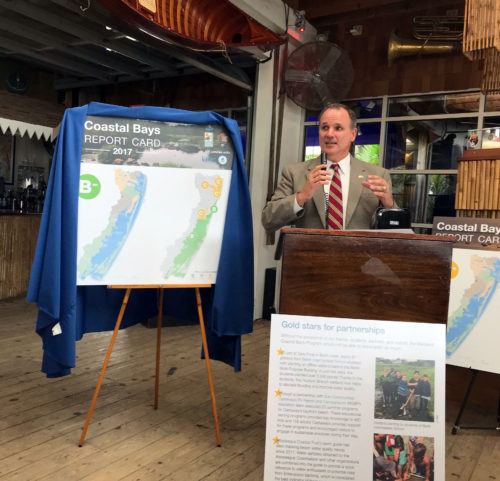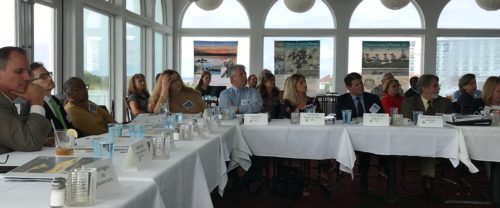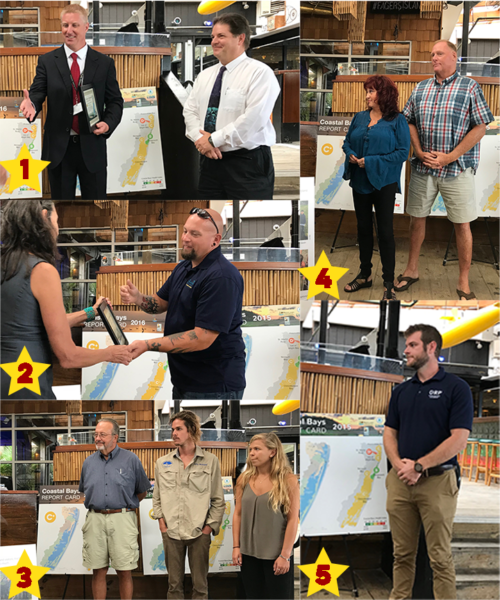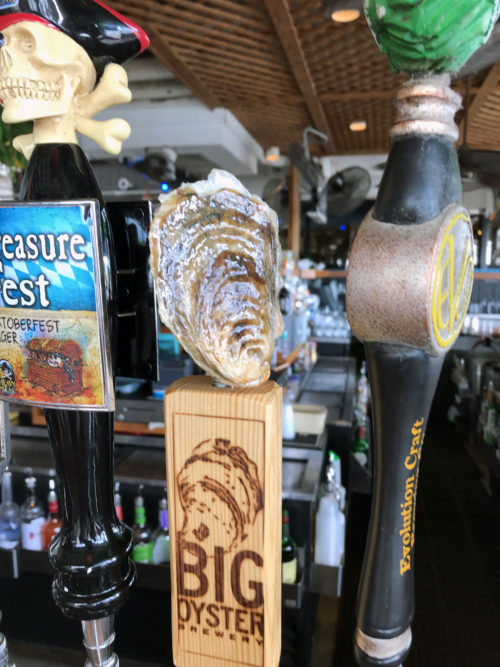Maryland Coastal Bays report card gets a B- for the first time
Bill Dennison ·On 20 September 2018 on Fager’s Island, Ocean City, MD, the tenth annual Maryland Coastal Bays report card was released. The Integration and Application Network, University of Maryland Center for Environmental Science (IAN UMCES) has been partnering with the Maryland Coastal Bays Program, Maryland Department of Natural Resources, and the National Park Service to produce report cards for the coastal lagoons that separate Fenwick and Assateague Islands from the mainland. The overall report cards scores have been either a grade of “C” or “C+” each year since we started in 2008, but the 2017 report card score was “B-“ for the first time ever. In addition, we have back-calculated report card grades beginning in 1986 using the same indicators, and even the historic grades were worse than “C”. Thus, the “B-“ grade was, in fact, the best grade in 32 years of report card grades.
The major reason for the first “B-“ grade was the improved grade for Chincoteague Bay, which was a result of improved nitrogen and phosphorus levels. The reduced nutrient levels are encouraging, and if these improvements continue, we can expect some additional positive environmental results.
The 2017 report card release immediately followed the annual Maryland Coastal Bays Program (MCBP) Policy Committee meeting. The MCBP Policy Committee is adroitly chaired by the Department of Natural Resources (DNR) Secretary Mark Belton. He is joined by three other Maryland cabinet secretaries, Department of Environment (MDE) Secretary Ben Grumbles, Department of Planning (MDP) Secretary Rob McCord and Department of Agriculture (MDA) Deputy Secretary Julie Oberg. In addition, the Maryland Coastal Bays Program is supported by the National Estuary Program administered by the Environmental Protection Agency Region 3 based in Philadelphia. EPA Regional Administrator, Cosmo Servidio attended the Policy Committee meeting, as did the Mayor of Berlin, “Gee” Williams and various members of the Ocean City and Worcester County councils.

At the MCBP Policy Committee meeting, I presented the concept of the “Triple Threat” to the Maryland Coastal Bays. The “Triple Threats” are the three major nutrient sources that we have determined from a series of scientific studies that are degrading the Coastal Bays. Threat 1: Agricultural runoff has been documented by nutrient measurements in shallow groundwater and in the small streams entering the western shore of Chincoteague Bay. Threat 2: Stable nitrogen isotopes were used to detect septic nitrogen inputs from the unsewered Chincoteague Island. Threat 3: Potential re-entrainment of elevated nutrient and chlorophyll waters from the plume of the offshore discharges of treated sewage from Ocean City and Delaware beach towns, which is currently being investigated by Dr. Judy O’Neil (UMCES) and Cathy Wazniak (DNR), supported by the National Park Service.

At the Policy Committee meeting, Cathy Wazniak summarized the monitoring challenges for the MDBP. These challenges include the difficulties in maintaining funding support for the different sampling programs needed to obtain the hard clam assessments, submerged aquatic vegetation surveys, and water quality monitoring used for the annual report cards. Frank Piorko, Roman Jesien, and Steve Farr from the MCBP provided overviews of their multiple initiatives.

After revealing the 2017 report card, the Maryland Coastal Bays Program Director, Frank Piorko, presented the Gold Star Partnership Awards to five impressive groups: 1) Berlin Intermediate School for planting over 2,300 wetland plants, 2) Sun Communities’ Castaways RV Resort and Campground for their environmental education programs at their resort, 3) Assateague Coastal Trust water quality sampling program to detect potential water contamination, 4) Ocean City Surf Club’s “Adopt Your Beach” program which picked up over 2,000 pounds of trash, and 5) the Oyster Recovery Partnership for engaging 31 waterfront homeowners for growing oysters transplanted into restoration areas. Last year, the IAN team received one of the Gold Star Partnership Awards, and once again, it was exciting and humbling to be grouped with such impressive groups of passionate and committed people.

Following the Policy Committee meeting and the report card release, we have a tradition of celebrating with the team partners. Since we held the meeting and release in the Fager’s Island restaurant, it meant that the celebration could immediately follow, and we tried out (and approved of) the Big Oyster Brewery draft beer. I always enjoy the Maryland Coastal Bays report card release and celebration, and this was no exception.

About the author
Bill Dennison

Dr. Bill Dennison is a Professor of Marine Science and Vice President for Science Application at the University of Maryland Center for Environmental Science.


